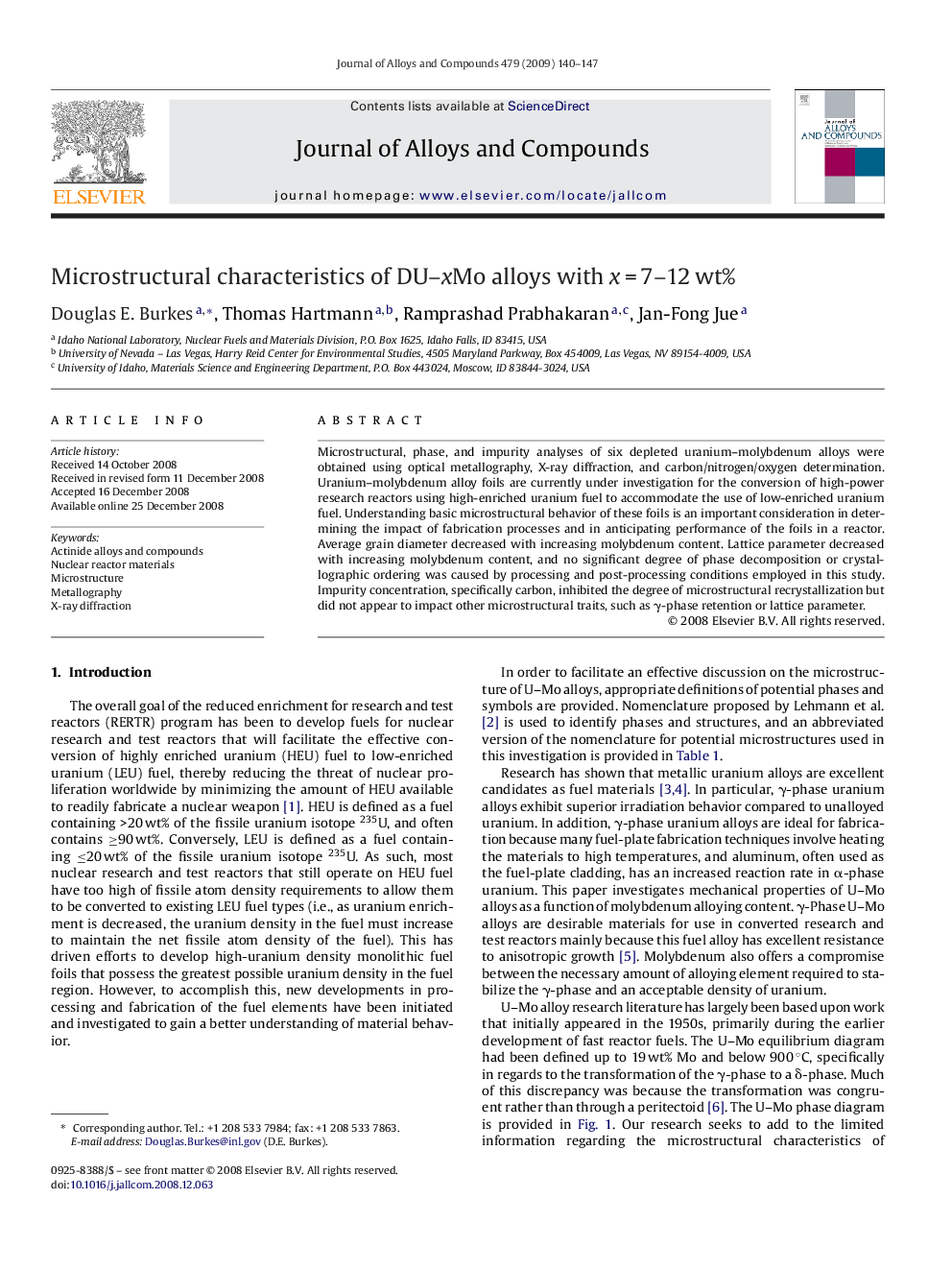| Article ID | Journal | Published Year | Pages | File Type |
|---|---|---|---|---|
| 1621857 | Journal of Alloys and Compounds | 2009 | 8 Pages |
Microstructural, phase, and impurity analyses of six depleted uranium–molybdenum alloys were obtained using optical metallography, X-ray diffraction, and carbon/nitrogen/oxygen determination. Uranium–molybdenum alloy foils are currently under investigation for the conversion of high-power research reactors using high-enriched uranium fuel to accommodate the use of low-enriched uranium fuel. Understanding basic microstructural behavior of these foils is an important consideration in determining the impact of fabrication processes and in anticipating performance of the foils in a reactor. Average grain diameter decreased with increasing molybdenum content. Lattice parameter decreased with increasing molybdenum content, and no significant degree of phase decomposition or crystallographic ordering was caused by processing and post-processing conditions employed in this study. Impurity concentration, specifically carbon, inhibited the degree of microstructural recrystallization but did not appear to impact other microstructural traits, such as γ-phase retention or lattice parameter.
